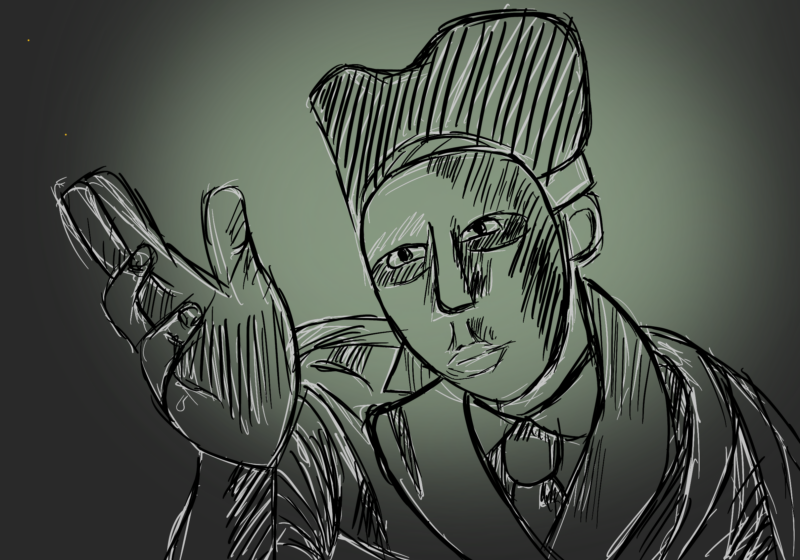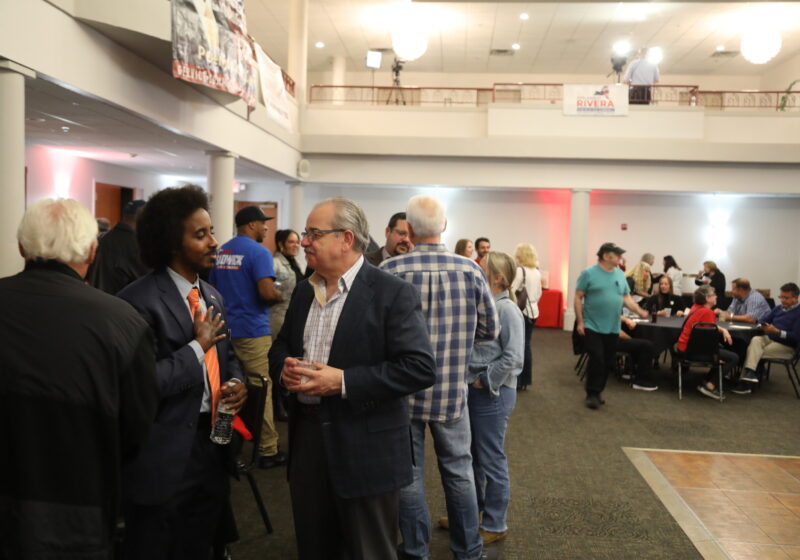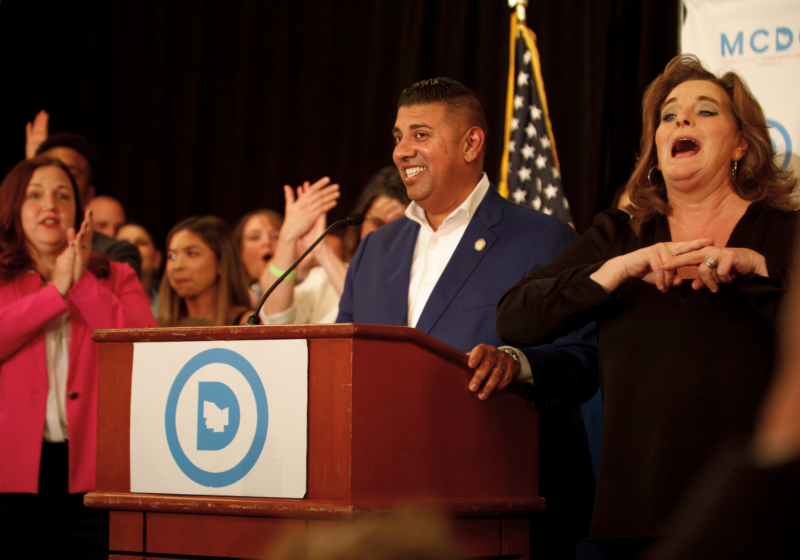Eastman and Rochester music lovers had the opportunity to witness an extraordinary percussion concert – Sean Connors’ senior percussion recital on March 18. Connors, the 2003 scholar of the Zildjian Company, is graduating this year with degrees in performance and music education as well as the Eastman Performance Certificate. He is a member of the Eastman Percussion Ensemble, ‘Lila Muni’ Balinese gamelan ensemble, ‘Pangaia’ Steel Band and ‘Ossia’ new music group, among others. Recently he performed the world premiere of Syndey Hodkinson’s trio ‘Shredded Postcards’ with renowned Eastman faculty Oleh Krysa, violin, and Kenneth Grant, clarinet. Connors’ recital opened with Leigh Stevens’ ‘Rhythmic Caprice.’ A marimba performer and Eastman graduate, Stevens is the inventor of the American marimba technique. He changed the way mallets are held and used, and invented “splashes” – flipping the mallets and hitting clusters of notes. He also coined the term “marimshot” – using the head and the shaft of the mallet at the same time. The ‘Caprice’ is his signature piece, which uses four mallets and all those extended marimba techniques. The applause following Connors’ amazing bravura performance did not cease until the beginning of the next piece, ‘Cadenza for six timpani’ by Peter Sadlo. The ‘Cadenza’ has two movements – ‘Freely’ and ‘Boogie-woogie.’ ‘Freely’ serves as prelude to the dance movement. ‘Boogie-Woogie’ requires an excellent timpani pedal technique, as the lowest drum at places has to change pitch every quarter-note. The smaller timpani offer a different kind of difficulty to the performer, who has to aim at a very small area of the drum in order to produce a pitch unpolluted by the sound of the mallet head itself. Connors not only executed the piece very well, he also successfully captured the funny and jazzy mood of the ‘Boogie-woogie.’The third composition performed was ‘Dmaathen’ by Iannis Xenakis for oboe and percussion. “It was probably the most difficult piece I have played,” Connors said. “Whenever we play student compositions and someone complains how hard they are, I remember that every composer with a big name actually writes hard music.” In the program notes Connors thanked “Bethany [Slater] for sacrificing her physical welfare in order to perform great music.” ‘Dmaathen’ asks the oboist to constantly use 20th-century oboe techniques such as whistle tones, multiphonics, flutter tonguing and extended fingering. The percussion part calls for xylorimba, an instrument lacking at Eastman. “I used vibraphone and marimba instead,” Connors said. “We played the piece at her recital as well and we didn’t have the score. We went though the parts measure by measure and thus really internalized the piece.” Connors’ commitment to music showed even more so after intermission when Ian Fry, Bobby Marino, Ivan Trevino and Peter Zlotnick accompanied him for his own transcription of David Maslanka’s solo marimba piece ‘Variations on Lost Love.’ Connors said about this composition, “I finished about a month ago. Part I was improvised by the accompaniment and everything else was written out. We have improvised a lot together, so it worked out really well. As far as the fully composed parts, I tried to expand the sound world of the marimba and didn’t add many new elements, except the Interlude. I mostly emphasized the important melodic lines with doublings of the melodic instruments. I took the sound I was trying to emulate on the marimba and put the real sound in. When I started composing, I originally wanted to have a wood versus metal deal, but I didn’t follow up on the idea. However, this is how I decided on the instrumentation. Everyone had an average of five instruments – a wooden, metallic and a pitched one, a drum and a cymbal. We rehearsed enough, and two grad students, Chris Fosnaugh and Doug Perkins, gave suggestions concerning mallet choice and balance.” This impressive example of collaboration and support between colleagues and friends culminated in the performance of the twenty-minute work. With his impeccable taste and superb knowledge of percussion, Connors had succeeded in transforming Maslanka’s harmonically mediocre and overly repetitive work into a real set of percussion variations – truly diverse, exciting and breathtaking. This phenomenal recital concluded with an extremely rare, but very beautiful finish. The Eastman audience, so used to welcoming world-class performers, honored Connors with erupting into an immediate, spontaneous, and fully deserved standing ovation. Finally, the soloist decided to interrupt the ongoing and non-diminishing cheers with thanking the audience and inviting everybody to a reception in Cominsky promenade. In the future Conors said, “I want to go to Northwestern University to study with Michael Burritt. Later, I want to play in a professional chamber group – even if it means me creating a professional percussion ensemble.” The incredible talent and genuine support from everybody who performed with him and attended his recital, proves doubtlessly that graduating students like Sean Connors, who possess the genius, commitment and generous personality of a real artist bring hope and optimism for the future of music.
Album Review
‘CHROMAKOPIA’: On Tyler, the Creator’s return
I can’t help but feel reminded by this album of a world in which art is allowed to breathe without the judgment and conformity we’re expected to endure to be accepted. “CHROMAKOPIA” rejects those notions, just as Tyler’s done his entire life.
2024 election
Bronson secures victory for another State Assembly term
Longtime assemblyman Harry Bronson (D) fended off challenger Tracy DiFlorio (R) in his race to hold New York’s 138th Assembly…
2024 election
Cooney wins re-election in State Senate
New York State Senator Jeremy Cooney made an appearance at Tuesday’s Monroe County Democratic Committee watch party upon winning re-election…




